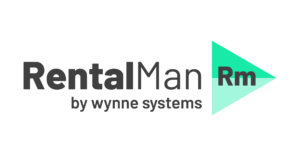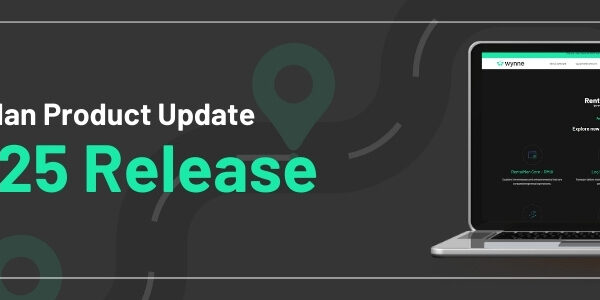
What is Single Sign On (SSO)?
Single Sign-On (SSO) is an authentication process that allows a user to access multiple applications or websites using one set of login credentials (such as username and password). This means that rather than remembering a different password for each service, a user can navigate seamlessly between services without the need to sign in multiple times.
Why is SSO important?
Before we dive in to our list below, let’s step back and look at some numbers. Take a guess at how many passwords the average person has to remember. Is it 50? 65? More?
According to a study from NordPass, an average person has around 100 different passwords to remember. 100! There’s no way to properly track that unless you’re some kind of savant like Matt Damon in Good Will Hunting.
No matter how much you want them to, people don’t have the time or brain space to remember that many passwords. Beyond memorizing log in information, managing a bunch of different systems can be cumbersome to the user base. Naturally, this leads to some concerning practices and effects in your organization. Here are a few big ones:
- Password Security – One of the largest issues that SSO can help solve is poor password practices and management in your organization. As mentioned above, 100 passwords is way too many to remember. That leads people to either create weak, unsafe passwords, or do things like write them down on a post-it note and keep it on their monitor. In that case, what’s the point of a password anyways? SSO cuts down on the need to remember a bunch of passwords from different systems and consolidates access into one log in. It’s much easier to remember a single password and encourages better practices like creating strong, safe passwords.
- Software Adoption – While this is a larger topic (we covered this in a recent webinar), difficult log in experiences lead people to simply not use a software. This is especially true if they already have some sort of hesitations with the new software. The company invested in the software for a reason. It’s important that the team uses it. SSO is a great way to create a better user experience that ultimately encourages better software user adoption.
- Rental Productivity – Rental is a time dependent business in many cases. Rental teams need fast, responsive, and effective software tools to help them throughout their daily tasks. The longer they fiddle with log ins, passwords, and other “administrative” factors, the less actual work they are doing at the end of the day. Single Sign On is a great way to keep your team productive and helping the company grow.
- IT Headaches – Accessibility and other system issues don’t just stop at a user level. Naturally, any issues with accessibility like password resets and account lockouts flow over to the IT department. SSO is a great way to significantly cut down on these issues and keep the IT team focused on more meaningful, productive projects.
Considerations for SSO
1. Choosing the Right SSO Solution
Selecting the appropriate SSO solution requires a thorough assessment of your business’s specific needs and technical environment. It’s crucial to look for a solution that not only supports the types of applications your business uses but also offers scalability to accommodate future growth. Security features such as encryption standards, token-based authentication, and support for multi-factor authentication should be non-negotiable to ensure that your data and user information are well-protected. Additionally, consider the vendor’s reputation, customer support, and the community or resources available for troubleshooting and advice.
2. Understand Compliance Requirements
In the equipment rental industry, handling customer information and transactions often means dealing with sensitive data that’s subject to various regulations. Before implementing an SSO system, identify all relevant legal and regulatory requirements that pertain to your business operations, including data protection laws like GDPR or CCPA, and industry standards that might apply. Your chosen SSO solution must enable compliance with these requirements, offering features like data encryption in transit and at rest, audit trails, and data sovereignty options. Failure to comply can lead to hefty fines and damage to your company’s reputation.
3. Plan for Integration
Effective integration of SSO with your existing systems is vital to ensure smooth operations and to leverage the full benefits of the SSO solution. Start by mapping out all the applications and platforms currently in use and determine how they will authenticate through the SSO. This might require working with vendors to ensure compatibility and might also involve upgrading legacy systems that are not SSO-capable. Consider the user experience during the integration process to ensure that the transition is as seamless as possible, minimizing disruption to your operations and customer service.
4. Educate Your Team
The success of an SSO implementation greatly depends on how well your team adapts to the new system. It’s essential to conduct comprehensive training sessions to familiarize your staff with the SSO process, highlighting the benefits and changes to their daily workflows. Address any concerns and provide clear instructions on how to use the new system, including guidance on security practices like safe handling of login credentials and recognizing phishing attempts. Regularly update your team on any changes or updates to the SSO system to ensure they remain informed and competent in using the technology effectively.
5. Monitor and Update
After implementing an SSO solution, continuous monitoring is critical to detect and respond to any security threats or unauthorized access attempts promptly. Use the tools and analytics provided by your SSO solution to track usage patterns and spot anomalies. Additionally, keep the system up-to-date by applying software updates and patches released by the vendor to protect against new vulnerabilities. Regularly review your SSO setup and policies to ensure they still align with your business needs and security requirements, adjusting as necessary to maintain a robust security posture and optimal performance.

SSO & RentalMan
Single Sign On simplifies the user experience and enhances the security capabilities of your IT team by consolidating access to a single point. While RentalMan offers a wide range of capabilities for your rental team, it’s still likely to be a system used in conjunction with a wider tech stack of different solutions. With that in mind, here are a couple points on what RentalMan has to offer for SSO.
Authentication Methods
RentalMan uses OpenID Connect, which is an identity layer built on the OAuth 2.0 protocol. This protocol is a highly trusted, standardized authentication process.
Identity Provider Compatibility
RentalMan can use any OpenID Connect-compliant provider for SSO. Microsoft Azure and Google are tested and currently available for SSO with RentalMan.




